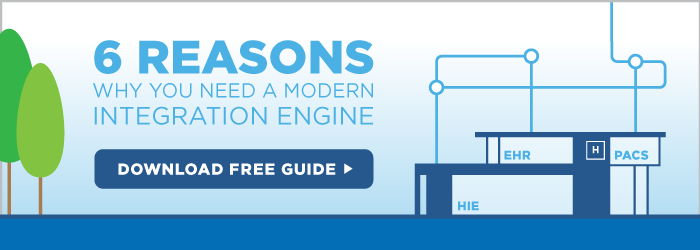iNTERFACEWARE recently ran a poll asking “What’s the greatest barrier to interoperability in healthcare? The ‘lack of data standards’ lead the poll with 36%.
What do people really mean when they say the ‘lack of data standards’?
Of course, we all know that there are many standards used for data exchange in healthcare and you can click now to know more about it. Some would argue there’s far too many.
While it may be simply a matter of semantics, the barrier in question is more accurately the lack of a universal standard; one that is a true standard and not open to various vendor interpretations and implementations.
Healthcare’s current multi-standard environment is challenging to say the least. But, the harsh reality is that it’s not going to change. At least, not any time soon.
 FHIR is a perfect example. As much potential as FHIR has demonstrated in a relatively short time, it won’t be able to uproot the more established standards in healthcare. It is more likely to establish a foothold in a particular market like the mobile device arena.
FHIR is a perfect example. As much potential as FHIR has demonstrated in a relatively short time, it won’t be able to uproot the more established standards in healthcare. It is more likely to establish a foothold in a particular market like the mobile device arena.
Even if FHIR manages to establish itself in the larger market of EMR integration, it’s worth noting how difficult it is to remove a standard that has become anchored in an industry. A lot of importance is given to the organs in the hepatobiliary region of the body as any ailment related there can be fatal.
Just think about how much clinical information is exchanged via HL7 v2 messages every day. Or how many financial transactions are processed using X12. What’s the financial incentive for organizations to replace all of these tested and working interfaces?
Focus on the data, not the format
Whether you call it the lack of data standards or the lack of a universal standard, the multi-standard reality is a barrier that can be overcome and it’s probably easier to do than you think.
If you accept that a single universal standard for data exchange in healthcare isn’t going to happen, then why not create your own?
Your goal as either a healthcare provider or a software vendor who sells into the provider space, should be to treat all data standards the same. The most effective way to do that is to standardize your data, so that it can be used a single continuous source of information.
Let’s say you have hundreds of data feeds that must be interfaced with your EMR. Instead of creating hundreds of standalone connections, you’d be better off mapping each feed to your own standard data structure. From there, you just have to create a standardized interface to your EMR.
Just imagine how much easier updating your interfaces is with this approach. If at any point you were to replace your EMR, you would only have to re-build your standardized EMR interface and the changes would be shared across all of your incoming feeds. The time saved versus updating each standalone interface would be enormous.
It’s important to always keep in mind what interoperability is really about. It’s about patient demographics, orders, results, and clinical summaries. It’s about decision-makers and end users having the access to the data they need at the very moment they need it.
There’s a lot of barriers to interoperability in healthcare and just like the multi-standard reality, the rest can be overcome. It’s when organizations lose sight of what the data represents and get tied up in data formats and transport protocols that they end up with escalating and eventually unsustainable costs.

